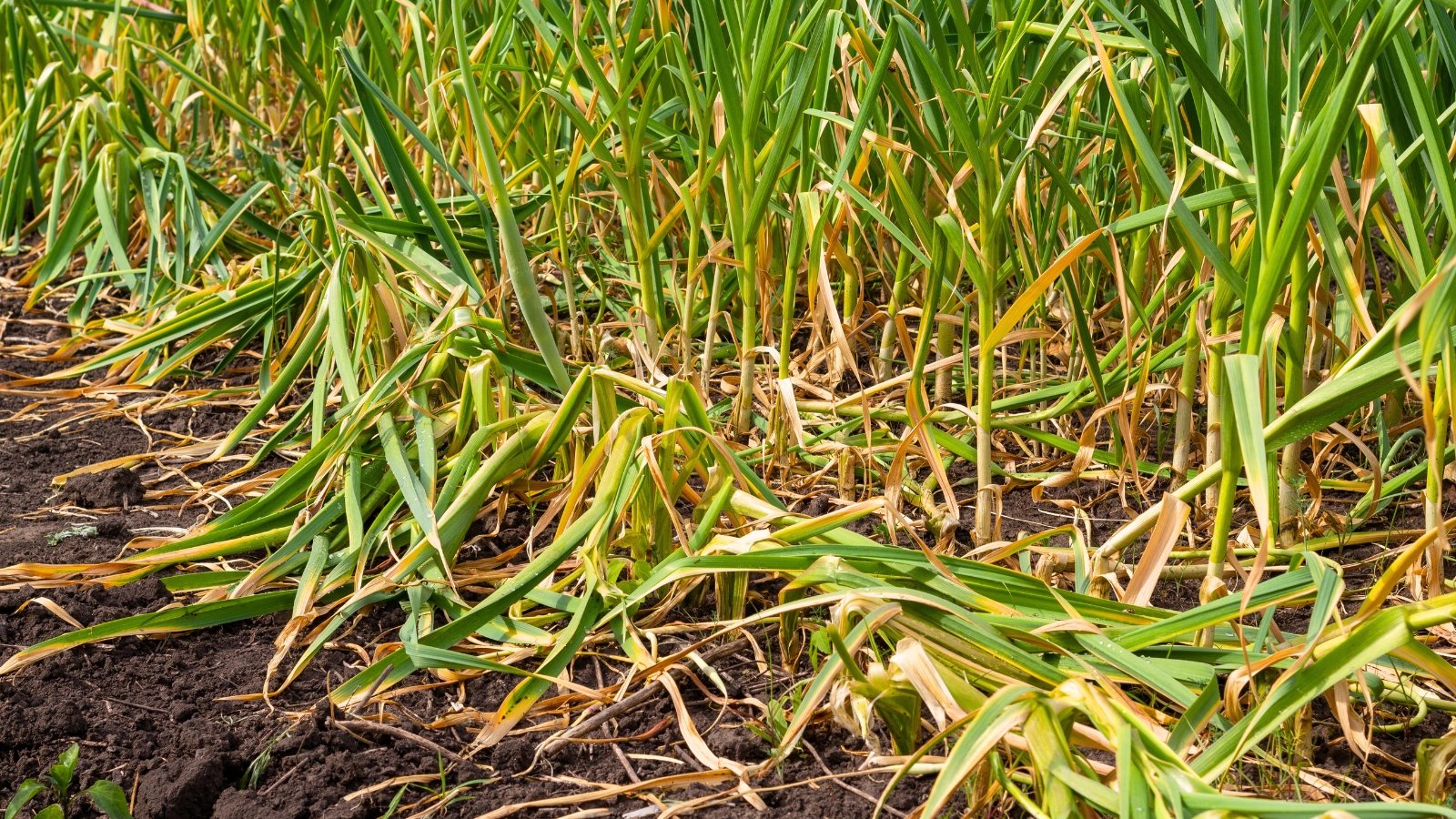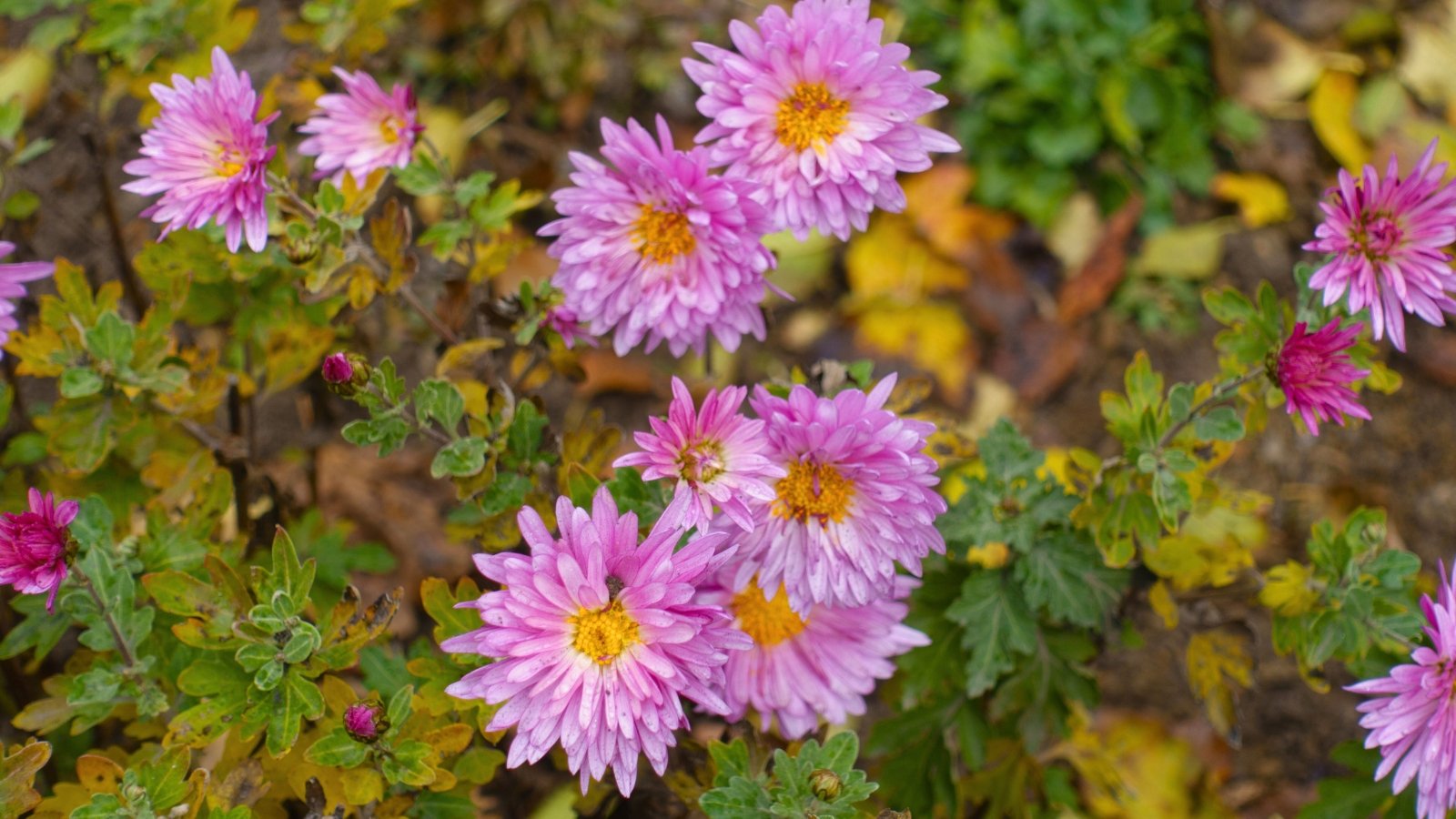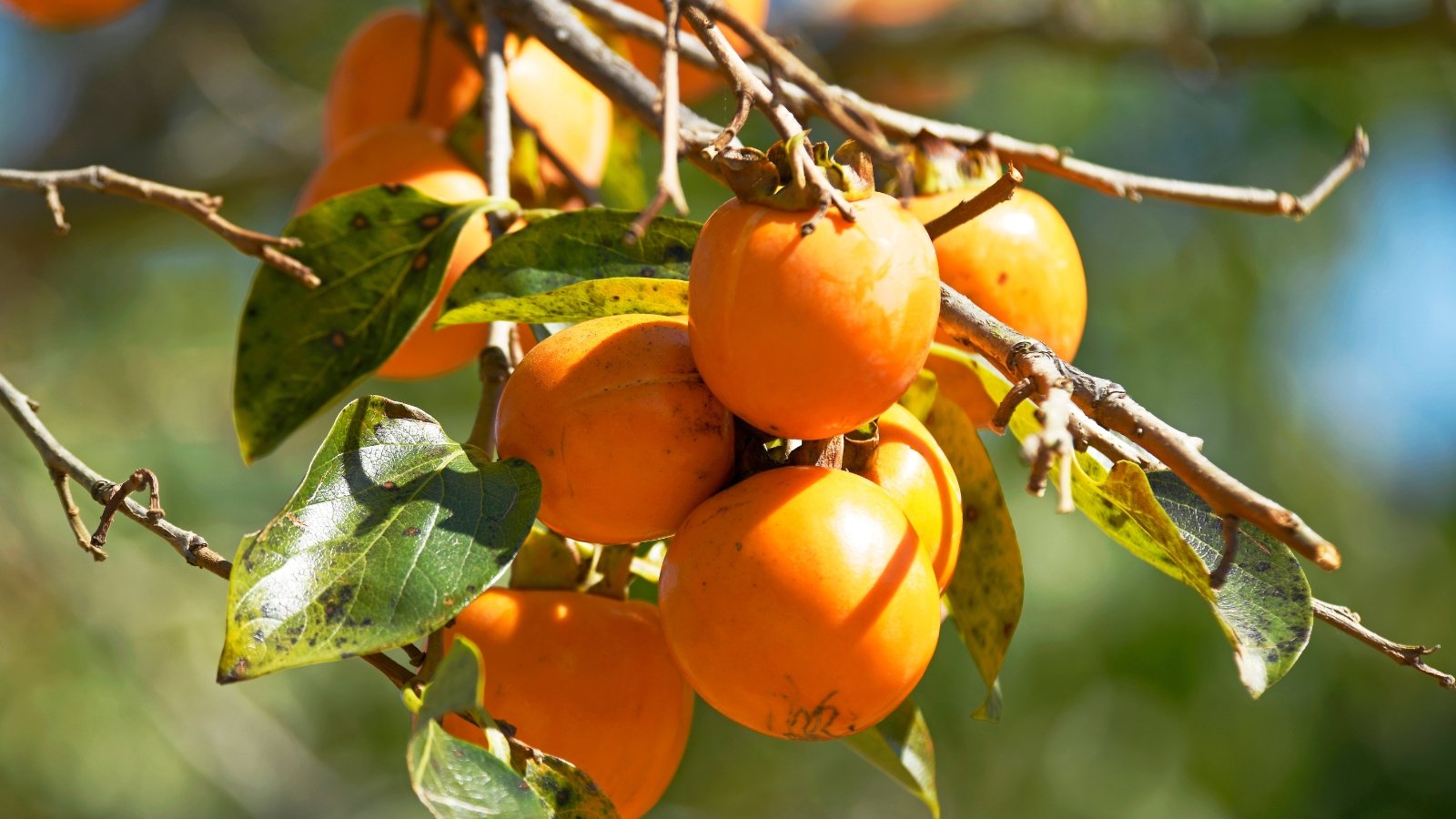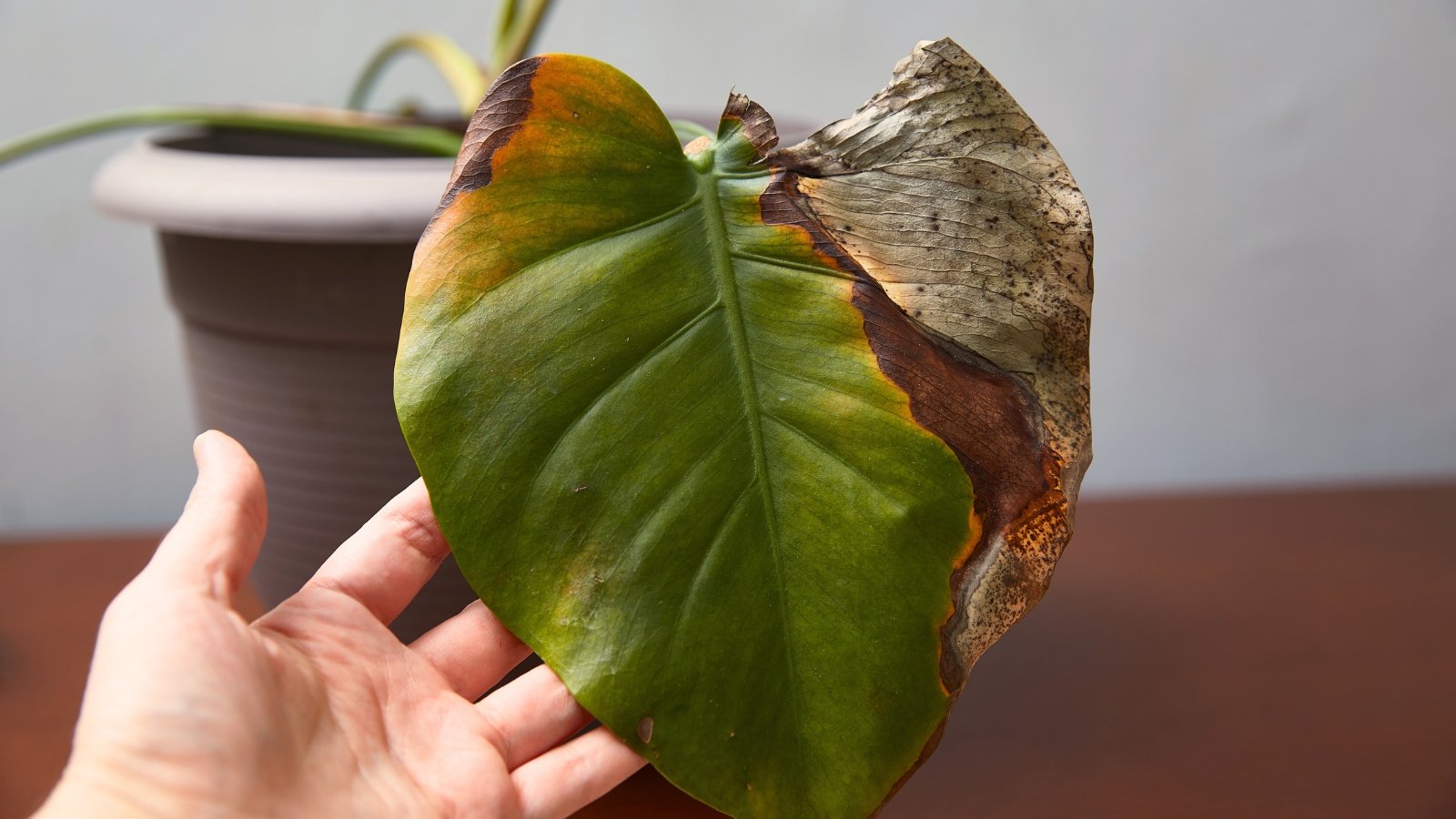
5 Most Widespread Houseplant Sicknesses: Prevention and Treatment
[ad_1]
I’ve a knack (or an behavior) for “rescuing” houseplants destined for the dumpster. You perceive these—they’re usually sitting by themselves on a half-off desk on the yard coronary heart. Maybe it’s the highest of the season. Maybe any person forgot to water them. Whatever the trigger, these vegetation develop to be merchandise that have to be moved.
Ultimate summer time season, I seen a whole tray of lovely little alocasia vegetation on acknowledged desk. They appeared… okay-looking, save for plenty of splotchy leaves. Maybe they’ve been merely disregarded inside the photo voltaic for too prolonged? They’ve been so very low cost…
My horticulturist thoughts knew it more than likely wasn’t a very good suggestion. Nevertheless I couldn’t resist it. Correctly, fast-forward a month later, and the leaves of my rescued alocasia have been slowly filling in with yellow-ringed, brown splotches (while you study on, you’ll research it was attainable a case of bacterial leaf spot—a typical houseplant sickness). I trimmed contaminated leaves to no avail and, in the end, I wanted to confess defeat.
Early identification and remedy of houseplant sicknesses may make all the distinction in saving the one that you simply love greenery. By learning to acknowledge these indicators and understanding the underlying causes, gardeners can take proactive steps to take care of the sickness and cease its unfold.
This article is going to data you via the most common houseplant sicknesses, offering recommendations on identification and prevention that may help you maintain your indoor yard flourishing.
Anthracnose
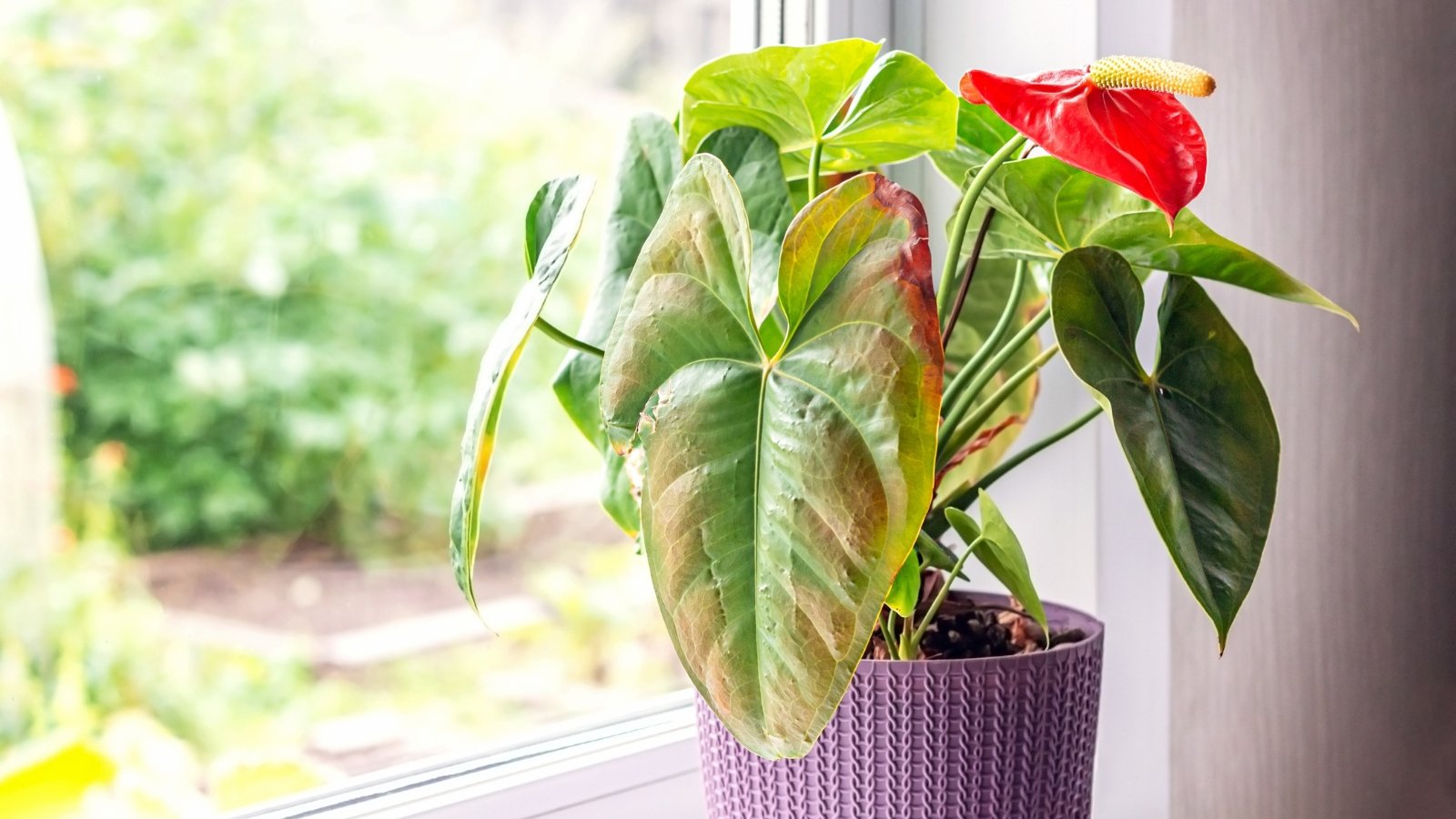

Anthracnose is a humorous fungus. Or, fungi, as a result of it’s actually plenty of completely totally different species of fungus. The time interval “anthracnose” covers a set of indicators that plague vegetation, nonetheless the set off can actually stem from plenty of numerous sorts of fungus.
The fungi are host-specific, so the fungus that causes anthracnose in a single plant is simply not the similar fungus that impacts one different. Like many fungal sicknesses, anthracnose is most prevalent in durations of extreme rainfall and humidity. Spores unfold merely by means of water, and as such, anthracnose is a typical sickness which will impression the whole thing from timber to watermelons to hollyhocks, and naturally, houseplants.
Anthracnose can usually be confused with totally different plant sicknesses and sometimes a laboratory analysis is required to confirm its presence. Anthracnose in houseplants often begins with yellowing throughout the leaf margins and solutions. The data will darken to brown sooner than slowly extending up and spherical all the leaf. Finally the leaves will shrivel, die, and fall from the plant.
Stopping anthracnose in houseplants contains plenty of key practices. First, assure vegetation are in well-drained soil and a container with drainage on the bottom. Steer clear of overhead watering, as additional moisture can promote fungal improvement and spores may very well be unfold merely by means of splashing water.
Maximize air circulation spherical your vegetation by spacing them adequately and pruning any overcrowded foliage. Protect your houseplant present tidy by disposing of fallen leaves and particles, which could assist reduce the possibility of anthracnose. Recurrently look at your vegetation for early indicators of an an infection, akin to small, darkish spots on leaves.
To deal with anthracnose, first prune off and destroy any contaminated leaves to forestall the sickness from spreading. Ensure you disinfect pruners completely after pruning each plant to avoid spreading fungal spores.
After eradicating the contaminated plant supplies, apply a foliar spray on the remaining leaves. Neem oil has been confirmed to be environment friendly in lowering the severity of anthracnose. Whereas it would not actually therapy any sicknesses, neem oil prevents the germination of spores and retains spores from penetrating leaf tissue. If neem oil doesn’t work, try a liquid copper fungicide, which may very well be utilized on to the remaining leaves.
Bacterial Leaf Spot
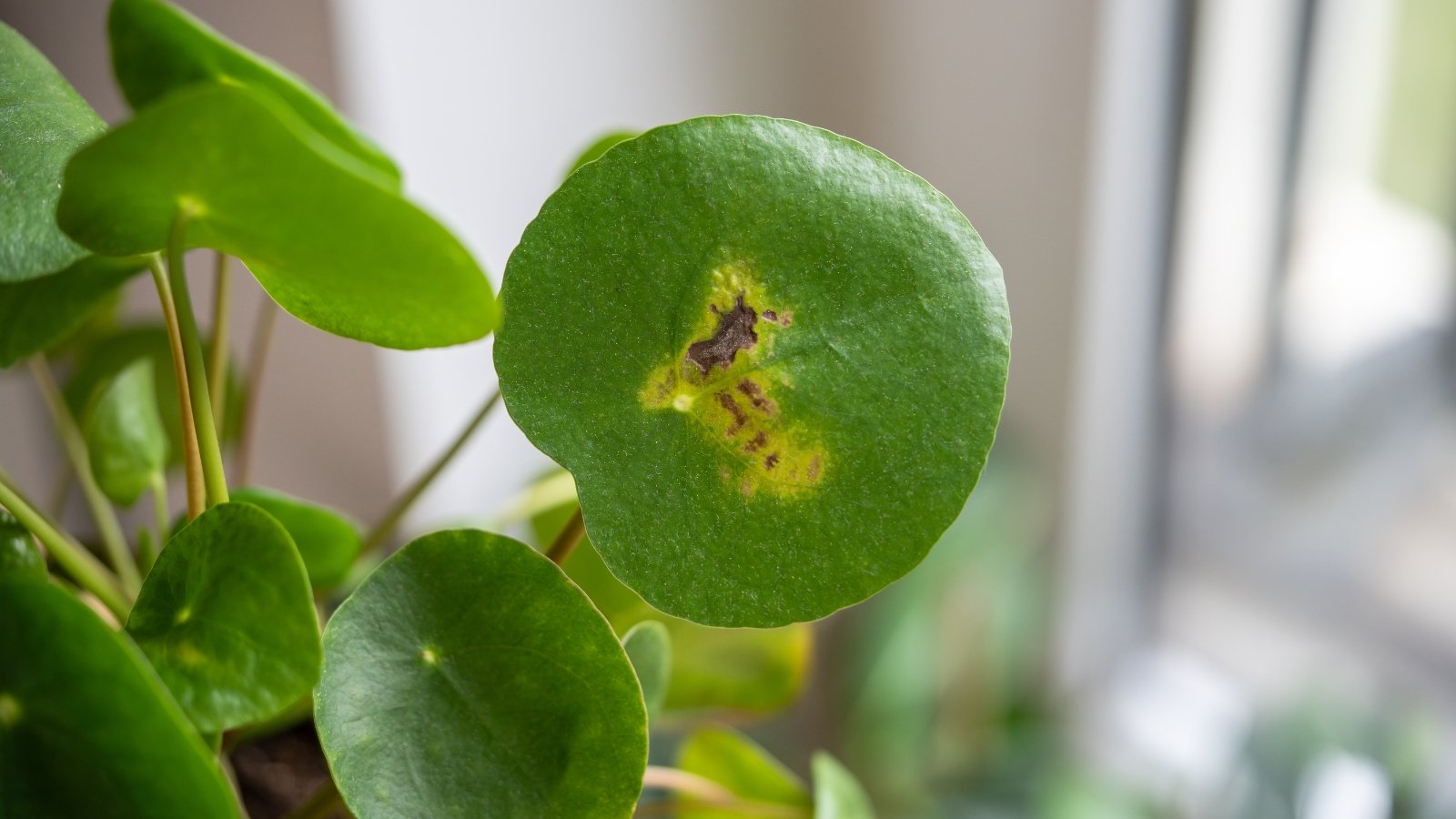

Bacterial leaf spot is usually attributable to micro organism inside the Pseudomonas, Xanthomonas, or Acidovorax genera. All of these micro organism thrive in warmth, humid environments, making them notably robust to control in greenhouse-propagated houseplants. Canna lilies, English ivy, poinsettia, Schefflera, and Fatsia are widespread victims of this sickness.
Bacterial leaf spot presents as darkish brown leaf blotches or lesions. The lesions usually have a yellow ring or edge spherical them. These indicators are sometimes seen on leaves, nonetheless usually are found on the plant stems as successfully. The blotches will develop and merge collectively over time, notably in very humid conditions.
Purchase houseplants and seeds from a very good grower. Contaminated seeds or plant cuttings are a critical vector of bacterial leaf spot. Native unfold can occur by water splashing between vegetation and soil, so avoid misting or drenching the leaves when watering.
Take away all contaminated leaves, and do away with them with the trash headed for the landfill. If a plant is carefully contaminated, it may very well be best to toss all of the plant and start latest. Do not try and compost contaminated plant supplies. Sanitize all pruners and pots associated to the contaminated plant.
There is no choice to completely therapy a plant with bacterial leaf spot, nonetheless some therapies could be utilized to sluggish and prohibit its unfold. After the contaminated plant supplies has been eradicated, apply a liquid copper cleansing cleaning soap to the remaining leaves, or take note of making an attempt a biocontrol remedy. Biocontrol therapies rely on a helpful bacterium, usually Bacillus amyloliquefaciens, to set off a plant’s immune response to battle off impending pathogens. Nonetheless, the efficacy of fungicides and biocontrol stays to be beneath look at.
Botrytis
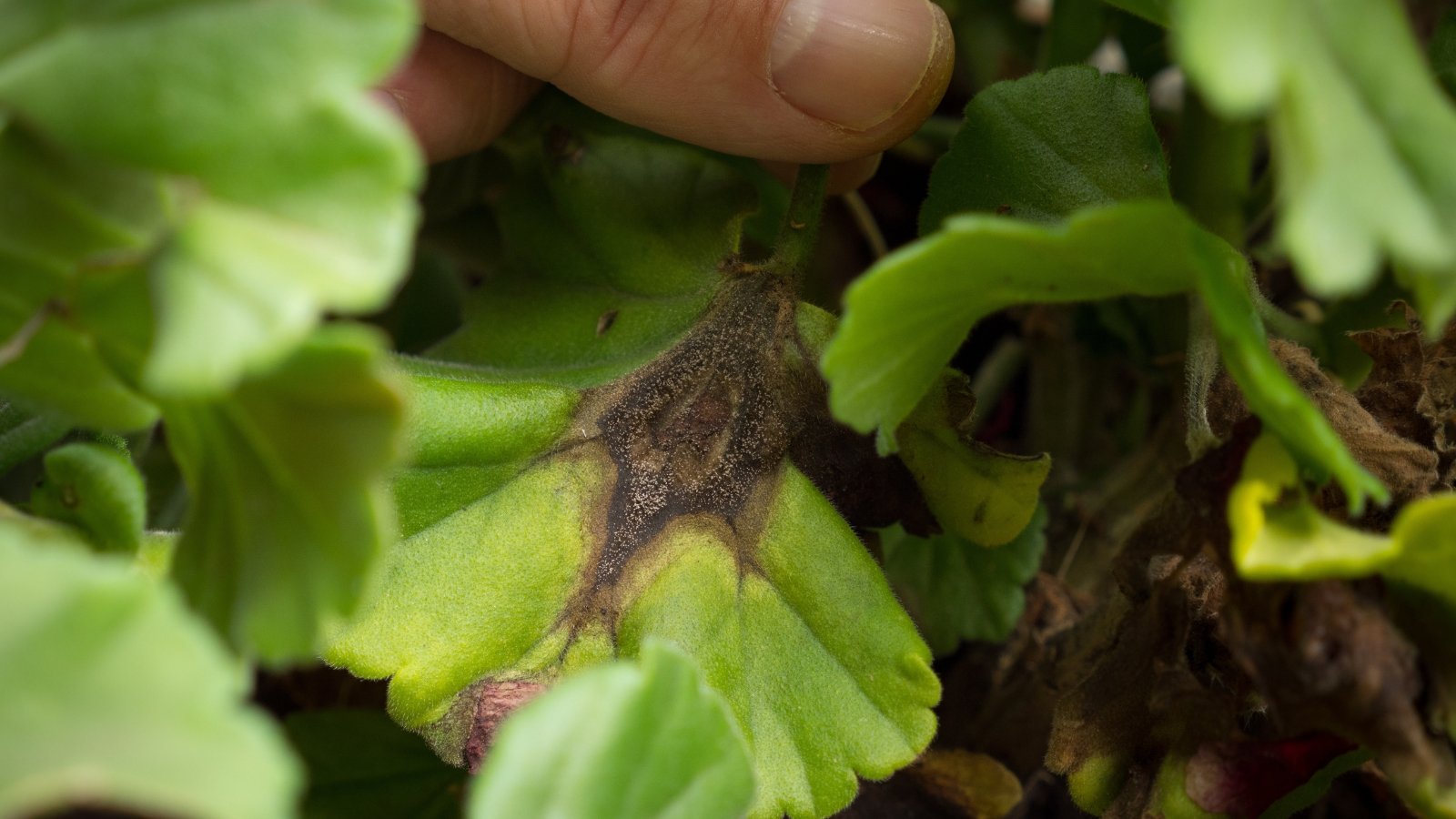

I as quickly as labored on a cut back flower farm that, together with an acre of self-discipline flowers, moreover cultivated stunning oriental lilies in a giant greenhouse. Botrytis was Lily Greenhouse Enemy Amount One, and we’ve got been at all times looking for this fungal sickness. The farm used massive followers to take care of air flowing throughout the greenhouse.
We steadily shuffled crates of lilies spherical and pruned lower leaves to verify each plant had a great deal of space. Moreover, we bleach-sterilized all pruners and harvest buckets day-to-day. The upcoming menace of botrytis saved us continuously on our toes.
Botrytis is attributable to the fungus Botrytis cinerea, and could be often known as gray mildew, ghost rot, or botrytis blight. It thrives in humid, cheap temperatures spherical 59-73ºF (15-23ºC), and spreads quickly to healthful plant tissue, making it a very damaging plant sickness.
Botrytis can infect an infinite fluctuate of vegetation, from edibles like berry bushes and tomato vegetation, to ornamentals like dahlias, impatiens, hyacinth, and naturally, lilies. It may really moreover impact widespread houseplants like African violets, orchids, and cyclamen.
Chances are high you will first uncover irregular flecks and brown spots on buds and flowers, with older blooms rotting shortly. After a while, delicate brown spots can appear on leaves, stems, and flowers. These delicate areas will in the end be lined inside the attribute fuzzy, gray improvement.
The vital factor to stopping botrytis lies in lowering the humidity and ramping up the air circulation. This can be tough in a home, the place you probably want to maintain your house home windows closed at cases, nonetheless stagnant, humid conditions are good for fungal improvement.
Try and vent rooms as so much as doable, switch houseplants exterior to protected porches when the local weather is delicate, and prepare a fan to take care of the indoor air shifting. An on a regular basis software program of neem oil to plant leaves might even cease botrytis, and totally different fungal sicknesses, from shifting in. Nonetheless, use warning as some vegetation are delicate to widespread features of any reply.
Fungal sicknesses, botrytis included, may very well be very robust to eradicate completely. Treatment usually focuses on limiting the unfold of this aggressive sickness. Take away and do away with all contaminated plant supplies, taking care to disinfect pruners and pots immediately afterwards.
Apply a liquid copper fungicide to the remaining plant leaves. Nonetheless, don’t rely solely on foliar spraying. To keep up your soil and vegetation healthful and well-protected, enrich the soil with helpful mycorrhizal fungi and micro organism.
These organisms not solely help cease sicknesses however as well as enhance your plant’s nutrient uptake. For stopping botrytis, basically probably the most environment friendly biocontrols are the helpful Trichoderma and Cladosporium. Make sure that any product you make the most of accommodates these two kinds, as they’re environment friendly and sometimes gentler than chemical fungicides.
Powdery Mildew
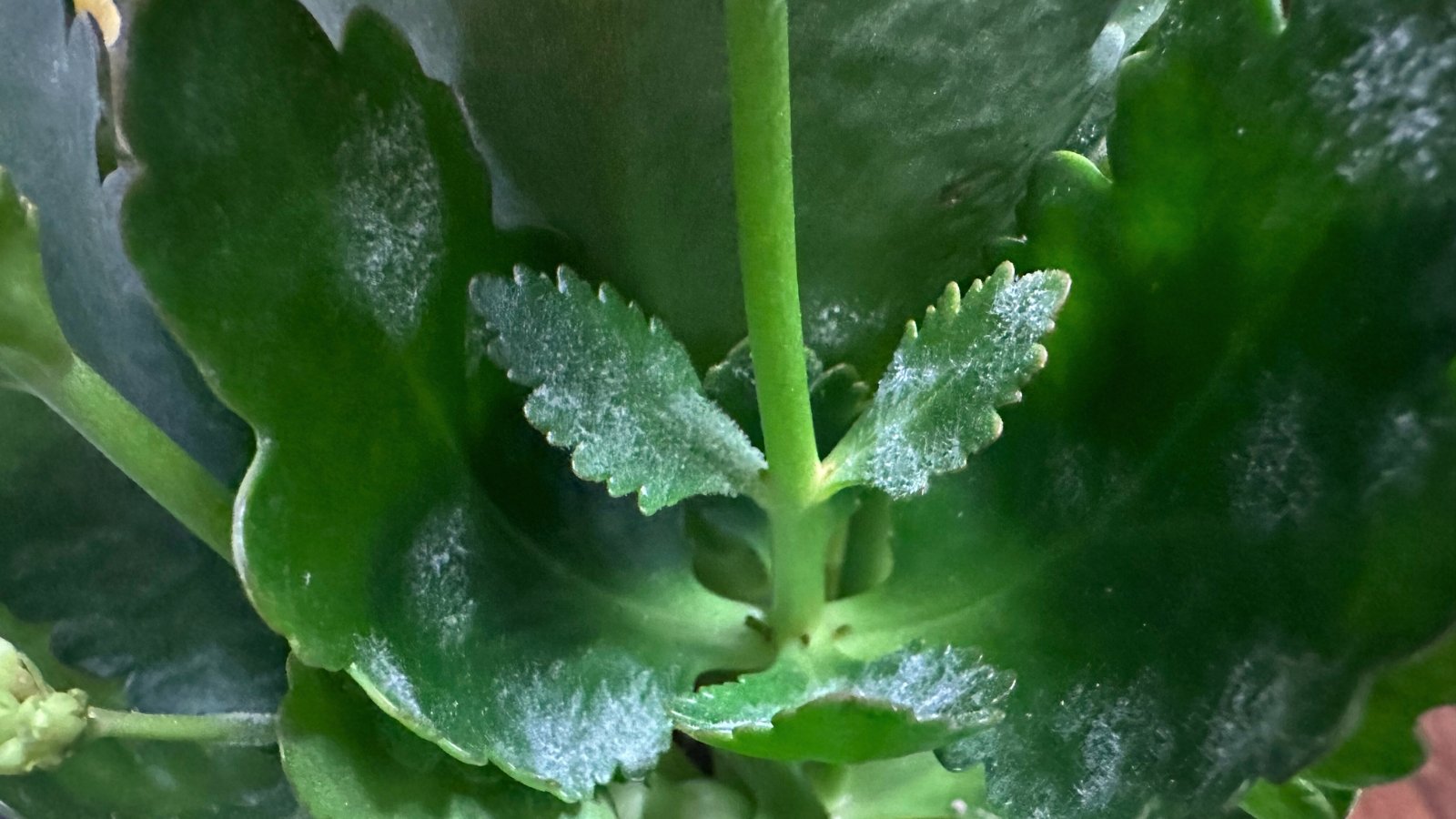

Powdery mildew is a fairly widespread fungal sickness which will impact numerous modern houseplants, along with African violets, begonias, kalanchoe, ivy, jade, and poinsettia. There are a variety of completely totally different species of fungi that set off powdery mildew; each one is linked to a particular plant or group of vegetation. The mould impacting your kalanchoe won’t be attributable to the similar fungus that’s triggering powdery mildew in your poinsettia.
As its establish implies, powdery mildew appears as a dusty, pale gray coating which will delay over leaves, stems, and buds. If allowed to unfold all by the plant, powdery mildew can actually impair photosynthesis and end in sluggish, stunted improvement.
Powdery mildew spreads shortly in humid conditions. Steer clear of overhead watering, as spores may very well be unfold merely by means of splashing water. Maximize air circulation spherical your vegetation by spacing them adequately and pruning any overcrowded foliage. Fungi survive in lifeless and decaying plant supplies, so be sure you maintain particles and leaves from gathering on the soil ground. This prevents proliferation inside the soil.
As with totally different houseplant sicknesses listed proper right here, the first plan of motion is to remove the diseased plant supplies. Severely contaminated vegetation must be discarded. Gardeners have had cheap success treating powdery mildew with baking soda.
Baking soda appears to sluggish the unfold of spores nonetheless doesn’t eradicate the fungus completely. It’s moreover important to note that prolonged use of baking soda can alter salt ranges inside the soil along with change the pH; this might presumably be merely as damaging to some houseplants. Making use of a liquid copper fungicide is useful, nonetheless not for prolonged as some strains of this sickness can assemble resistance to fungicides.
Root Rot
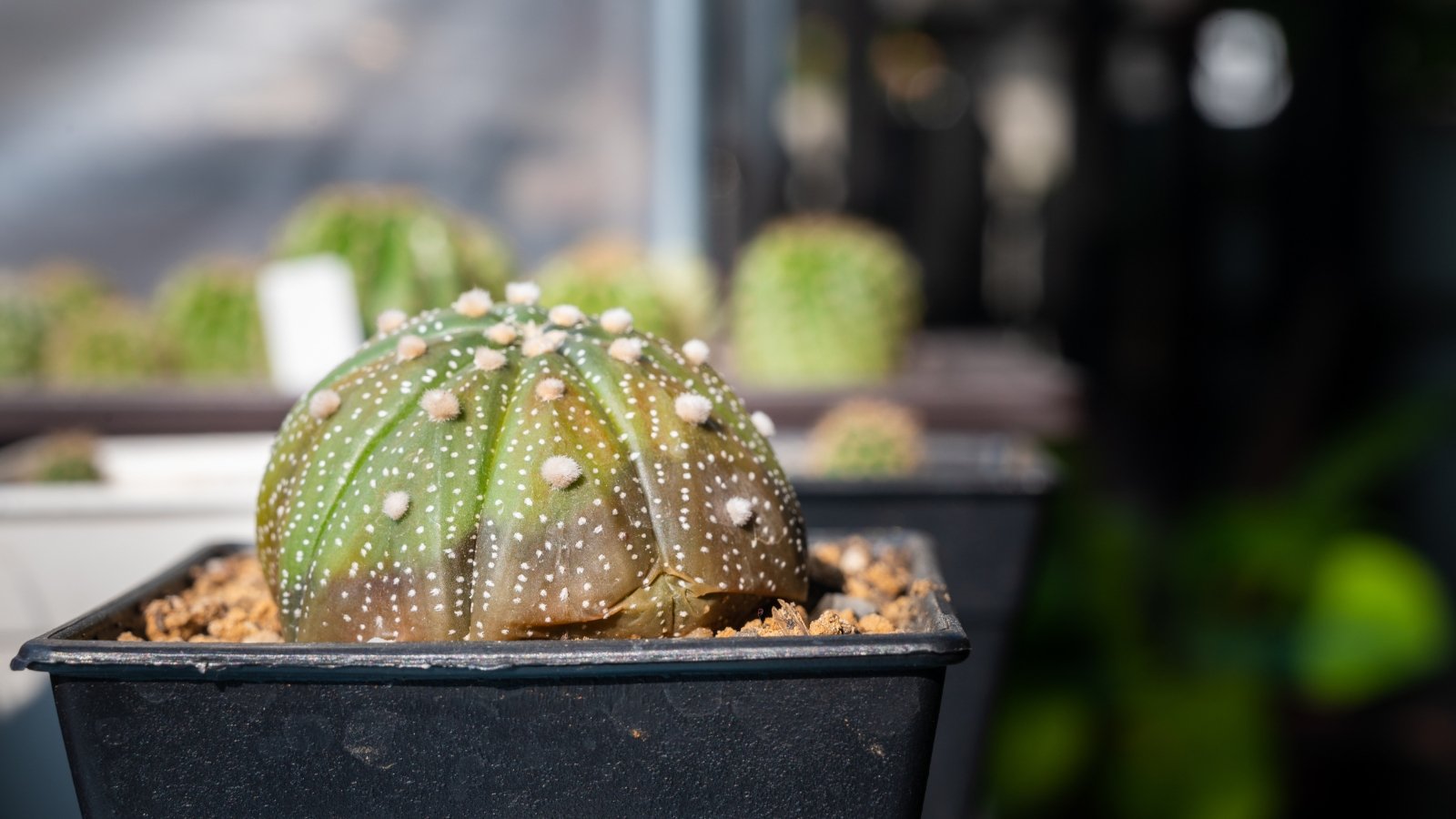

Arguably one of many very important widespread houseplant disesaes, root rot causes wilting and mushy roots with a foul odor. It may even be often known as stem rot. It is attributable to the fungi Rhizoctonia solani, Pythium spp., Phytophthora spp., Alternaria spp., and Fusarium spp. These fungi all thrive in perpetually moist soil.
Houseplants that tolerate moist soil, like ferns and peace lilies, are a lot much less prone to root rot. Nonetheless, succulents and cacti select dry, well-drained conditions. This leaves them additional in peril within the occasion that they’re overwatered. If left unchecked, vegetation contaminated with root rot will die.
Gardeners may first uncover that their plant is wilting carefully, regardless that it has been well-watered. Together with wilting stems and leaves, vegetation impacted by root rot can have girdled stems that appear weakened near the soil stage. There is also a black or brown ring of decaying tissue on the soil stage as successfully. Healthful roots which could be often company and pale in coloration, is also darkish brown, mushy, and even a bit funky-smelling.
Arms down, the most suitable choice to cease root rot is to verify houseplants are potted in a well-drained, high-quality potting mix. Do not use random soil out of your yard, because it’s attainable far too heavy and filled with clay. Root rot fungi thrive in waterlogged soil. Make sure that the container your plant is in has drainage holes on the bottom, and allow the container to empty and dry out completely sooner than watering as soon as extra.
If all the foundation ball is contaminated, you will attainable should do away with all of the plant. The place indicators are infecting some nonetheless not all the roots, cut back out the contaminated roots, then repot the plant in latest potting mix and a sterile pot.
Take note, healthful roots shall be company and lightweight in coloration. It may very well be tempting to hit your houseplant with a dose of concentrated nutritional vitamins after being repotted, nonetheless preserve the fertilizer. Your harassed plant will need time to find out new roots sooner than putting vitality into leaves and buds.
Remaining Concepts
Within the case of houseplant sicknesses, prevention really is the easiest remedy! Recurrently look at your vegetation for indicators of sickness, assure appropriate watering practices, and maintain good air circulation between vegetation. By understanding the first indicators of trouble (and avoiding vegetation on the half-off desk!) and determining what conditions might give rise to fungal and bacterial infections, gardeners can maintain a healthful and blissful houseplant assortment.
[ad_2]
Provide hyperlink
